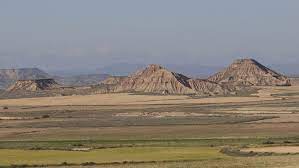Monadnocks and Inselberg are a type of mountain formation that is characterized by their isolated, singular peaks rising from the surrounding terrain. They are found all over the world and can vary in size and shape. Monadnocks are not only visually striking, but they also hold significant geological and cultural importance. In this article, we will explore what monadnocks are, how they form, and their significance.

Table of Contents
What are Monadnocks?
Monadnocks, also known as inselbergs, are isolated hills or mountains that rise abruptly from the surrounding terrain. They are often composed of harder and more resistant rocks than the surrounding softer rocks. This difference in resistance to weathering and erosion leads to the formation of a singular peak. Monadnock is a term derived from Mount Monadnock, a 3,165 feet high mountain located in New Hampshire, United States, which was believed to be the first such mountain to be identified and named.
How do Monadnocks Form?
Monadnocks are formed through a process called differential erosion. This process begins when an area of land is uplifted, exposing a layer of rock that is harder and more resistant to weathering and erosion than the surrounding rock. Over time, the softer rock around the harder rock erodes away, leaving the harder rock exposed as a singular peak.
What is Inselberg?
Inselberg is a German word that literally means “island mountain”. In geology, an inselberg is a prominent isolated rock hill or mountain that rises abruptly from a surrounding plain. These landforms are typically made up of resistant rocks that have eroded more slowly than the surrounding softer rocks.

Inselbergs can be found all over the world, but are particularly common in Africa and Australia. They often have a distinct appearance and are important landmarks and tourist attractions. In some cultures, inselbergs have spiritual or religious significance and are considered sacred places.
How Inselberg is formed?
Inselbergs are formed through a combination of tectonic and erosional processes. The following are some of the key factors that contribute to the formation of inselbergs:
- Tectonic uplift: Inselbergs are often found in regions that have undergone tectonic uplift, which causes the land to rise and form mountain ranges. As the mountains erode over time, some isolated peaks remain as inselbergs.
- Differential weathering and erosion: Inselbergs are typically made of resistant rocks that erode more slowly than the surrounding softer rocks. Over time, weathering and erosion wear away the softer rocks, leaving the inselberg standing as an isolated peak.
- Exfoliation: In some cases, inselbergs form when large sheets of rock peel away from the surface of a mountain due to changes in temperature and pressure. This process, known as exfoliation, can leave behind isolated rock formations.
- Volcanic activity: In some cases, inselbergs are formed through volcanic activity. When the magma solidifies underground, it can create a hard rock that is resistant to erosion. Over time, the surrounding softer rocks erode away, leaving the hardened magma as an inselberg.
Overall, inselbergs are formed through a combination of geologic processes that result in the isolation of a resistant rock formation.
Comparison of Monadnocks and Inselberg
| Feature | Monadnock | Inselberg |
|---|---|---|
| Definition | An isolated hill or mountain rises abruptly from a surrounding plain or plateau, typically composed of hard, erosion-resistant rock that was once buried beneath softer rock layers. | A prominent isolated rock hill or mountain rises abruptly from a surrounding plain, typically made up of resistant rocks that have eroded more slowly than the surrounding softer rocks. |
| Origin of Name | Named after Mount Monadnock in New Hampshire, USA. | From the German word “Inselberg”, which literally means “island mountain”. |
| Formation | Formed through differential erosion and weathering of surrounding softer rock layers, leaving behind an isolated peak of harder rock. | Formed through a combination of tectonic uplift and differential erosion, resistant rocks erode more slowly than surrounding softer rocks. |
| Examples | Mount Monadnock in New Hampshire, USA; Stone Mountain in Georgia, USA. | Uluru (Ayers Rock) in Australia; Devil’s Tower in Wyoming, USA. |
| Size | Can range in size from small hills to large mountains. | Can range in size from small hills to large mountains. |
| Significance | Monadnocks are often important landmarks and tourist attractions and may have cultural or spiritual significance for nearby communities. | Inselbergs are important landmarks and tourist attractions and may have cultural or spiritual significance for nearby communities. |
| Location | Found in various regions around the world. | Found in various regions around the world, but is particularly common in Africa and Australia. |
Overall, while there are some differences in their formation and origin of name, Monadnocks and Inselbergs share many similarities in terms of their isolated nature, geologic composition, and cultural significance.
Important Links